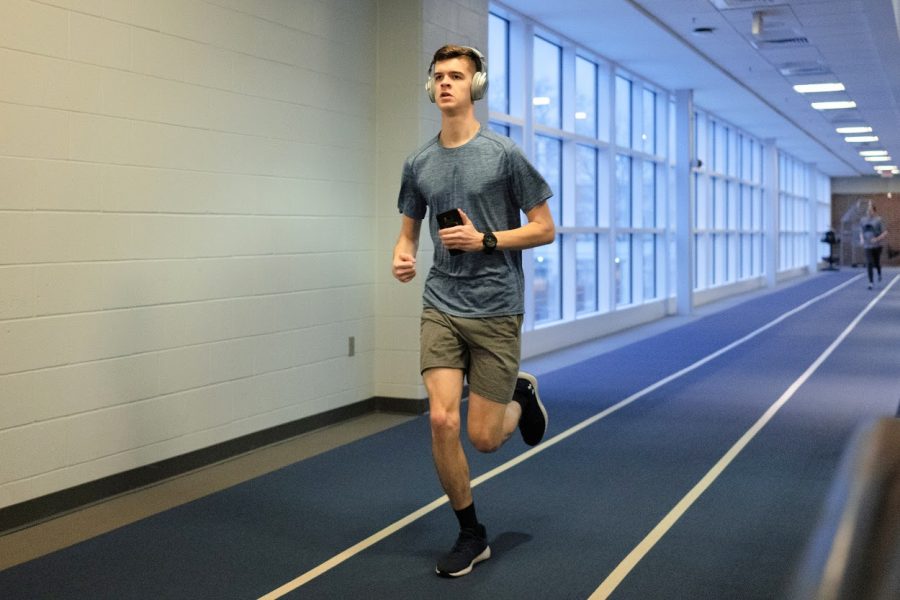Opinion | Mask requirement hinders athletic achievement
A student runs around the indoor track at the ARC on Feb. 29. Columnist Chiara discusses the negatives of wearing a mask while working out.
Oct 27, 2020
Throughout this global pandemic, the University has taken multiple measures to assure our safety here on campus, including requiring masks at the gym. Though this rule allows the gym to remain open for our use, certain aspects of this policy hinder athletic performance.
Masks block the regular flow of oxygen to the body. At a gym where people lift, run, bike, swim, row and play sports, this reduction in oxygen leads to earlier fatigue and prematurely increases one’s heart rate and blood pressure with minimal amounts of exercise, according to the National Institute of Health.
Essentially, gym-goers cannot perform to their highest potential under this policy. With cardio exercises, the effects of masks immediately arise because these types of exercises, by nature, rely on the efficient exchange of oxygen. As masks block this airflow, performance decreases.
Lifters also experience this elevation of heartrate which can turn a squat into a sweat-fest. Completing repetitions with low amounts of rest time in between feels like running a mile: Sweat dripping, heavy breathing.
While wearing a mask, those seeking to lose weight, improve agility, increase muscle mass or otherwise improve their overall physical fitness may experience slower improvements over time than would be expected under normal circumstances.
Spirits may fall when fitness fiends note the difference in times or pounds without a mask compared to their stats with one. For example, someone trying to jump from an eight-minute to a seven-minute mile might be surprised when their first mile on the treadmill with a mask clocks in at eight minutes and thirty seconds.
In reality, people at the gym, or in any other space where a mask is required while exercising should expect worse numbers due to the inefficient flow of oxygen face coverings cause. While it is tempting to attribute these statistical deteriorations to a personal lack of effort, it’s important to recognize the negative ramifications of masks in terms of athletic measurements.
In the era of COVID-19, a herculean effort is required to even set foot in a gym; it can therefore be disconcerting when one’s effort to seek fitness is rewarded with disappointing numbers. Considering the fragile nature of mental health during this pandemic, it may be inadvisable to implement any policy which could further discourage someone from going to the gym.
Continuing to benefit from exercise during the pandemic may look different than it did pre-coronavirus, but it’s crucial to find ways to adapt. For example, since wearing masks at the gym hinders performance, consider adding outdoor exercises such as a bodyweight circuit or running sprints to remind yourself of your maximum potential.
Additionally, surgical masks are not only more effective at limiting the spread of the coronavirus but also are more breathable than cloth masks and are downright more comfortable. Choosing these masks over cloth ones might be worth a try.
Overall, seeing as masks adversely affect an athlete’s performance, we must find ways to continue exercising to stay healthy and happy amidst a global pandemic.
Chiara is a freshman in LAS.






